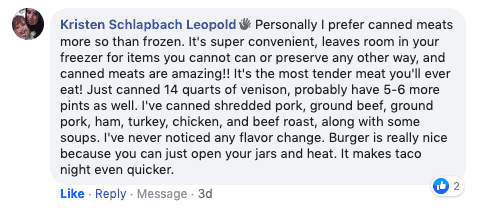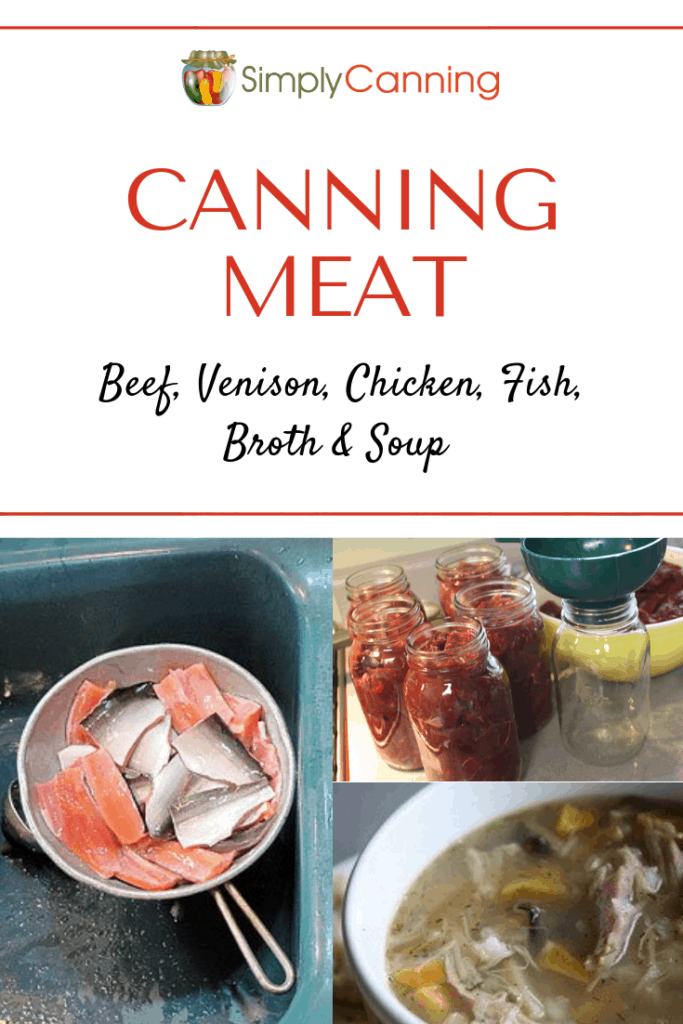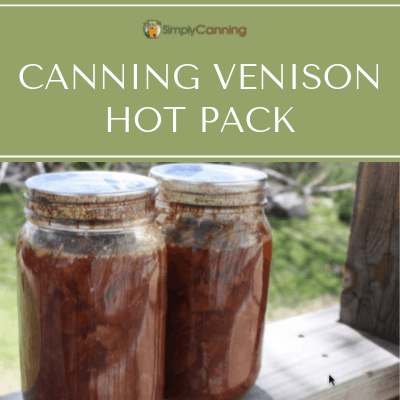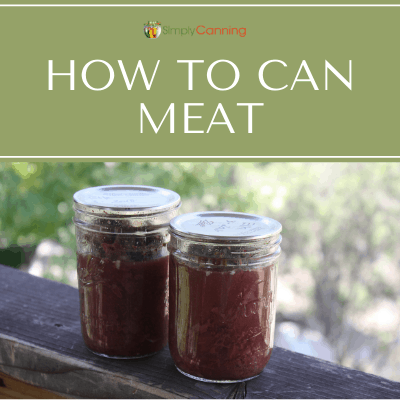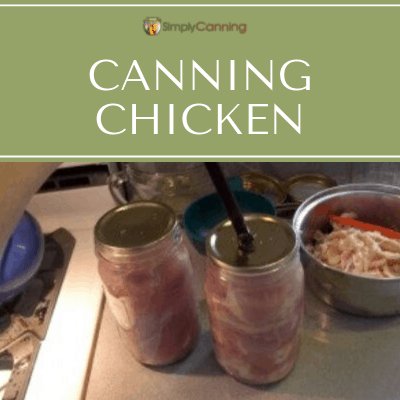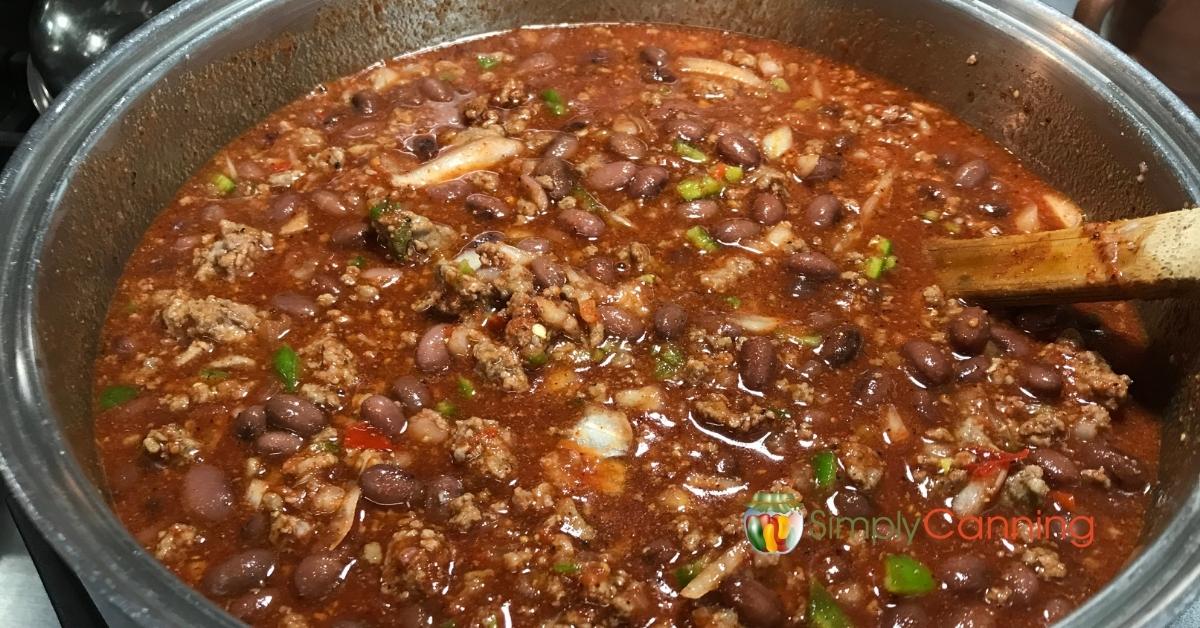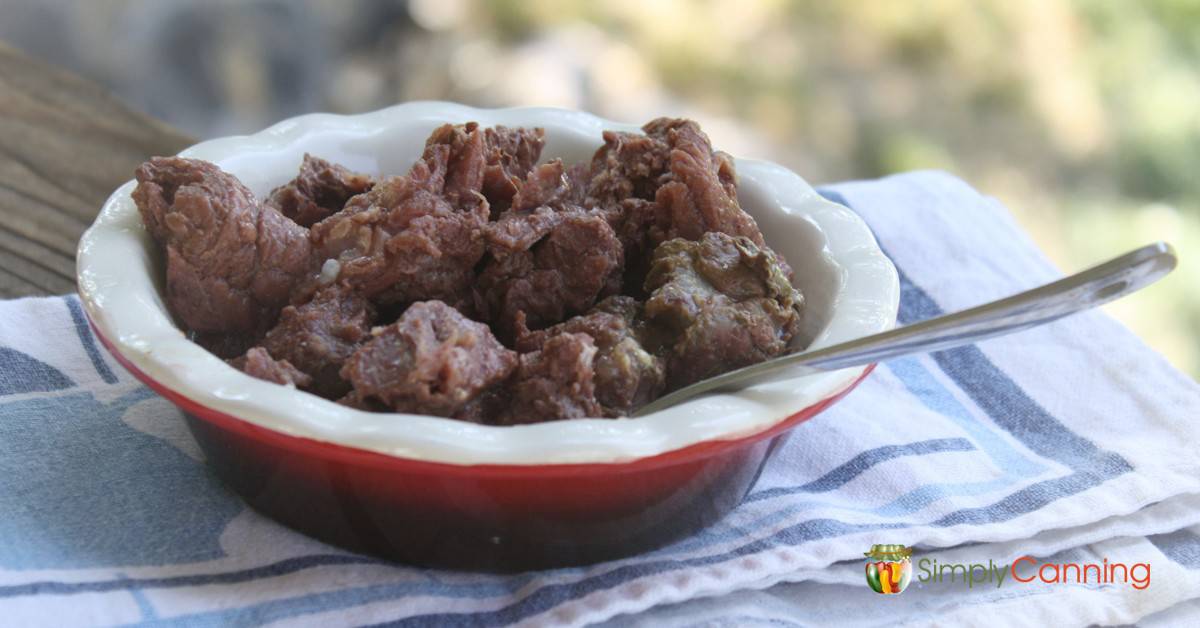Canning Meat, How easy it can be.
This page may contain affiliate links. More Information.
Canning meat may seem like an intimidating task, but let me assure you that it’s not as difficult as it may appear. I hesitated for years. When I finally tried it… I wondered why I waited so long. With the right knowledge and a few simple steps, you’ll be canning meat too. It saves freezer space, tenderizes tough wild meats, and makes getting dinner on the table fast.
Below, you’ll find:
- A list of beginner friendly recipes for canning a variety of meats that will help you get started.
- A collection of educational articles that answer some common questions on how to can meat. Everything from how to use a canner, what equipment is vital and expert tips from our kitchen.
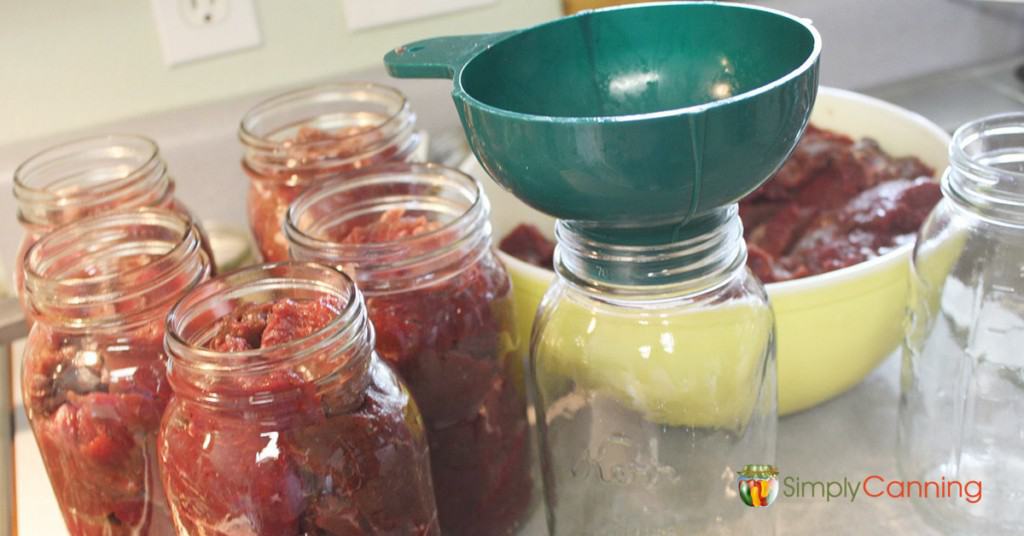
To can meat, start by trimming any excess fat and connective tissue from the meat. Then, pack canning jars according to your recipe. You’ll need to choose raw pack or hot pack, ground or cubed. Once your meat is packed into jars, follow pressure canning methods. The result? Tender and delicious canned meat ready to be enjoyed whenever you desire.
Canning Methods for Meat and Any Meat Products
Because meat is a low acid food it must be processed in a pressure canner. This includes meat, soup, stew or any product where you are adding meat. For more information on pressure canners check these articles.
Learn how to use a pressure canner.
Best Pressure Canners Available and which one I recommend for beginners.
Canning Meat Recipes Links
Canning Ground Meat
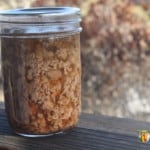
Canning Cubed Meat – Hot Pack
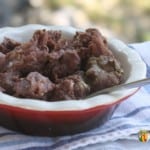
Canning Cubed Meat – Raw Pack
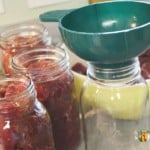
Canning Chicken or Rabbit
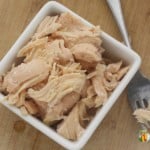
Canning Chicken Broth
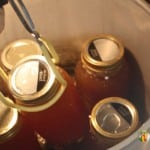
Canning Fish
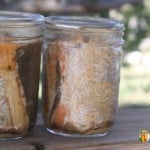
Canning Smoked Fish
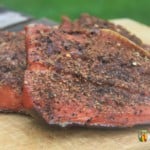
Homemade Chicken Soup
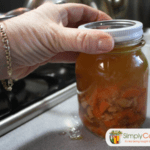
Canning Soup
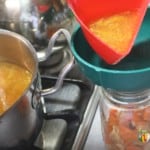
Canning Broth or Stock

Equipment Needed for Canning Meat
Here’s a list of the basic tools you’ll need:
Pressure Canner: A pressure canner maintains the high temperatures necessary to kill harmful bacteria. Specifically it is needed to stop botulism.
Canning Jars: Choose jars specifically designed for canning. Quart or pint jars are available.
Lids and Bands: Use new canning lids for each canning session to ensure a proper seal. Bands can be reused as long as they’re in good condition.
Canning Hand Tools. These hand tools can be purchased individually, but kits are an inexpensive way to go.
- Jar Lifter: This tool helps safely lift and handle hot jars from the canning pot.
- Canning Funnel: A funnel with a wide mouth is used to fill the jars with fruit and liquid while minimizing spills and mess.
- Bubble Remover/ Headspace Tool/ Magnetic Lid Wand: These hand tools help when you are packing jars to remove air bubbles, ensure the correct headspace, and retrieve metal lids from hot water (not boiling) to place on the jar.
Other Kitchen Essentials: A timer, kitchen towels, pot holders, spoons, knives area all general kitchen tools that may be needed depending on your project.
How to Use a Pressure Canner
These are the basic steps for using a pressure canner to can meat. Each recipe will be slightly different as it depends on what recipe you are using.
- Some will be hot pack some will be raw pack.
- You might be making soup, or you might be canning plain chicken breast or bone in drumsticks, or venison.
- Some processed for 25 minutes, some for 75 minutes.
You get the idea. You’ll have to check the individual recipes for specifics but the basics are the same.
- Prepare the Pressure Canner: This post has specifics on heating the water, prepping jars, and gathering equipment. Quart jars or pint jars may be used.
- Prepare the Meat: Trim and prepare the meat according to your chosen method (raw pack or hot pack). Or prepare your soup, or whatever recipe you are choosing.
- Fill the Jars: Add salt to your jars, 1 tsp per pint, 2 tsp per quart. (salt is actually optional) Place the prepared meat into the jars, leaving the recommended headspace. This is usually a 1 inch headspace but check your recipe for details. Headspace is the space between the food and the lid. Check here for more canning terminology if you need it.
- Wipe the jar rims clean: This is important. Meat may be greasy and you don’t want the grease to interfere with the seal.
- Place the lids and screw bands: Tighten the bands firmly but not overly tight.
- Process in the Pressure Canner: Follow pressure canning instruction to preserve your recipe for safe storage on the shelf. You’ll need to check your processing time and adjust for altitude.
- Cool Down: Once the processing time is complete, carefully remove the jars from the canner using a jar lifter. Place them on a towel-covered surface and let them cool undisturbed.
- After cooling, check for proper seals and store: Remove the screw bands, check the seal, label the jars, and store them in a cool, dark place.
Check here for full details on using either a dial gauge or weighted gauge pressure canner including printable list. Love the printable list!
Here is more information on altitude adjustments and why they are important. Any good canning recipe will have the adjustments for your altitude included.
Raw Pack vs. Hot Pack?
When it comes to canning meat, you have two primary methods to choose from: raw pack and hot pack.
First I’ll emphasize… raw pack is just referring to how the jars are packed, not how the jars are processed. You’ll always use a pressure canner no matter how you pack the jars.
Raw Pack Meat
The raw pack method involves placing raw, uncooked meat directly into canning jars. You will not add liquid to these recipes. The meat will produce it’s own juices. This method is quick, simple and convenient. However, some meats result in better quality with the hot pack.
Hot Pack Meat
On the other hand, the hot pack method requires lightly pre-cooking or browning the meat before canning. The cooked meat is hot-packed into jars along with liquids. This liquid can be water, broth, tomato juice.
Some recipes give instructions for both hot and raw pack. Soup, chili, stew are all always hot packed. Ground beef is always hot packed.
Ground Or Cubes
Another consideration when canning meat is whether to can it in ground or cubed form. Here’s a breakdown of the benefits and considerations for each:
Ground Meat
Canning ground meat offers versatility in its uses. It can be used in recipes such as meat sauces, chili, sloppy joes, and soups. Ground meat can only be beef, pork or venison. There are no tested recipes for ground chicken or any poultry.
Ground meat is always browned then packed in liquid. I can be canned loose in crumbles. Or it can be formed into patties and canned.
Sausage is an acceptable form of ground meat as long as the sausage ingredients don’t include ingredients that can’t be canned. Loose sausage or cased sausage is fine. You’ll want to cut cased sausage into 2-3 inch chunks. (Remember sage is an herb that gets stronger when pressure canned. So keep that in mind if your sausage includes sage.)
Cubed Meat
Canning meat in cubed form is particularly suitable for meats you may want to use as individual pieces, such as beef stew or stir-fries. It can be cut into cubes or strips if you prefer.
I’ve been asked about the texture of cubed meat. The chunks of meat are not like you have when you fry a good steak. It shreds nicely for bbq sandwiches, and can be used in casseroles. Or just make a gravy and top the meat serve with mashed potatoes.
Consider the intended use of your canned meat and choose between ground or cubed based on your preferences, safety requirements and the recipes you plan to make.
Can You Water Bath Can Meat?
Water bath canning is a popular method for preserving high-acid foods such as fruits and pickles. However, a boiling water bath is not safe for canning meat. Meat has a low acid content, making it susceptible to bacterial growth, particularly the deadly botulism toxin.
To ensure the safety of your canned meat, it’s crucial to use a pressure canner. The high temperatures achieved in a pressure canner are necessary to destroy any potential bacteria, ensuring the long-term preservation of your meat.
I’ve read over and over comments from people who simply boil their meat for hours and hours. Boiling will never get to the temperatures you can achieve in a pressure canner… no matter how long you boil.
What Meats Can Be Canned?
Canning opens up a world of possibilities for preserving various types of meat. Here’s a glimpse into the meats that can be safely canned:
Bear, Beef, Lamb, Pork, Veal or Venison
These meats are often canned the same way. For example… this recipe is labeled canning venison because that is what I usually have to can. However… you use the same recipe for Bear, Beef, Lamb, Pork, Veal or Venison. (More recipe links at the bottom of this page)
Chicken, Turkey, Cuck, Goose and Rabbit.
Canned poultry (and rabbit) opens up a world of quick and easy meal options. Learn how to safely can chicken for sandwiches, casseroles, soup, and more. Chicken can be canned bone in or boneless. It can be skinless or with the skin. (I highly recommend removing the skins. They get soggy. No one likes soggy chicken skins do they?)
Fish
Canned fish is another great project for those of you who live close to the ocean or lakes for fishing. Choose appropriate fish species and follow safe canning practices.
I have not done a lot of fish canning as I do not have an inexpensive source. But I have canned salmon! And oh was it good. And I also have a guest post here on how to can smoked fish. It is a different processing time so be sure and check it out.
Soup
Canned soups offer comfort and convenience, allowing you to enjoy homemade flavors anytime. Follow proper canning techniques and you can adapt your favorite soup recipe to be appropriate for home canning.
Broth
Canned broth is a pantry staple that enhances the flavors of countless dishes. Chicken, and beef broth that are home canned are so much better than the salt laden commercial varieties.
Processed Meat
Processed meat like ham or bacon are not acceptable for canning. There are too many variations, the meat texture is dense and there are no tested instructions for canning these products. There are a few tested instructions for including these as ingredients. Baked beans for example has a tiny 3/4 inch piece in each jar. This is the only acceptable place for canning processed meat despite what you’ll find on the internet. If you do find recipes… just remember your risks and make your decision.
Canning Liver, Heart or Other Organ Meat
There are no guidelines for canning organ meats. So it is not recommended. The issue is testing. Organ meat is different than other muscle meat. The meat is a much denser texture so separate testing would need to be done to determine how long to process so the heat penetrates fully to the center of the food. No new testing has not happened in a long time.
Some Things to Remember
When you are canning meat products remember these things:
- Learning how to can meat is not as hard as it may seem! Really, it is super easy. Don’t be intimidated.
- Be sure to trim away any gristle, bruised areas, or excess fat.
- Meat MUST be processed in a pressure canner. The processing times may seem long, but the investment of time now is so worth it in the end.
- Hot pack means you pack your meat precooked in some sort of liquid.
- Raw pack means you pack your meat raw (uncooked) with no liquid. If meat is raw packed, it will provide its own juice. It does NOT mean you don’t process it. You still need to process in a pressure canner.
- You can add bouillon when you are canning meat. Check the ingredients and make sure there are no fillers. Do not use the little packets of soup mix. These may have thickeners.
- Salt is optional when you are canning meat. But… oh I highly recommend it. Salt will add so much to the flavors. If you are on a low sodium diet, remember that these meats will likely have much less salt than any store brand. But you can reduce the salt safely.
- You’ll want to cut off any fat when you are canning. Small amounts will remain but trim any excessive fat.
- Follow the tested instructions and you have nothing to fear when canning meat. Both wild caught meat or farm raised or even roasts that you’ve found on sale at the grocers.
Frequently Asked Questions
Let’s address some frequently asked questions to provide clarity and guidance on the topic of canning meat.
Home-canned meat, when processed and stored correctly, can last for an extended period. Generally, canned meat can safely be stored for up to one year or even longer in ideal conditions. I’ve got more here on canning and expiration dates.
Yes canning raw meat is acceptable. You’ll just follow instructions for a raw pack. However I want to clarify that the meat will be cooked during processing. You do not end up with raw meat on your shelf.
Just about any fresh meat can be canned: bear, beef, lamb, pork, sausage, veal, venison, chicken, turkey, rabbit, fish, tuna.
However, there is no accepted testing that has been done on cured, brined, or corned meat. So, unfortunately, no canning ham, bacon, corned beef, hotdogs…or any other variety that I may have missed. (there are some tested recipes that include small amounts of these.)
Good question! This meat is precooked, so it is not going to be like taking out the ground beef and making a hamburger, nor will it be like cooking up a steak. It is perfect, however, for casseroles, chilis, tacos, and stews.
One way we like to use our meat is to just heat a jar of cubed beef or venison and add a white sauce and seasonings like onion/garlic. I like to use cream cheese! Then I serve this over mashed potatoes with a side veggie. It is a super-fast meal.
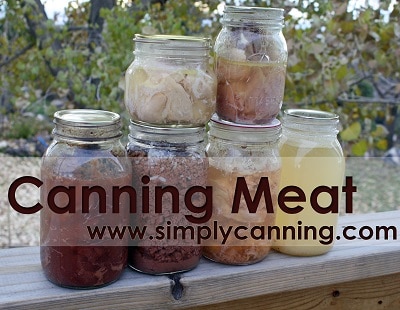
Canning venison was on my mind for many years, but I put it off. I canned vegetables, fruit, and jam, but I never considered the possibility of canning our meat as well. It just didn’t occur to me.
It seemed as if canning meat must be much harder than canning other produce. Why did I feel this way? I don’t really know. It was just the preconceived notion that I had.
Boy, was I wrong. We are a family of active hunters, so my husband and sons provide a freezer full of meat. This enables us to keep our grocery budget low. Whatever they bring home is cut up or ground. Before I started canning meat, most of it went right into the freezer, and we often made jerky and sausage too.
We process our own wild game from the field to the freezer or jar. Part of having tasty wild game is proper preparation of the meat.
When we expanded our garden, I started really focusing on not taking up too much freezer space. I did some research on how to can meat and what I found surprised me.
Cut up your meat, put it in a jar, add canning lids, rims and process? It seemed too easy. Could it really be that simple? I tried it, and guess what? It is. (with a few additional steps!)
We usually have a good supply of both venison (mule deer) and elk. Elk is our favorite by far, so I decided to start with canning venison. That way, if it did not turn out well, I did not use our favorites.
That first year I started with 14 quarts (that’s 2 canner loads) of cubed venison.
My boys, including my husband, declared that they like the canned venison over frozen. I agree! It is much more tender, and it is MUCH more convenient. We’ve since added ground meat to our pantry but still prefer the cubed.
I encourage you try it. When dinner time comes, open a jar of meat and start preparing right away. No defrosting. You might be as pleasantly surprised as I was.
